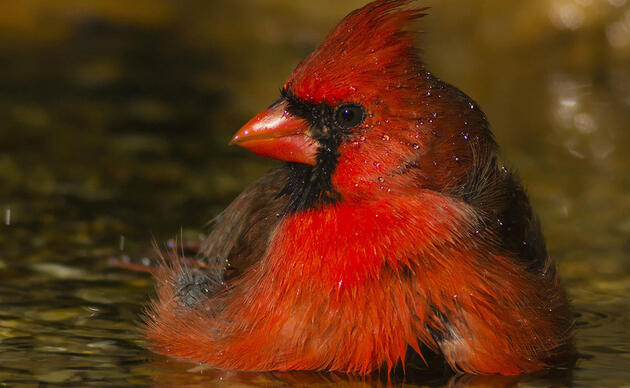The Florida Legislature must advance the EAA Reservoir in the 2017 Legislative Session
A proposal to speed up completion of a reservoir south of Lake Okeechobee in the Everglades Agricultural Area (EAA) is a top priority for Audubon Florida during the 2017 Florida Legislative Session. This issue is being championed by Senate President Joe Negron in response to massive algae blooms on Florida's east coast that occurred after billions of gallons of freshwater were discharged from Lake Okeechobee to the St. Lucie and Caloosahatchee estuaries.
At the same time that these estuaries were impacted by too much freshwater, the Southern Everglades and Florida Bay suffered from a lack of freshwater. Ecologically important sea grass died in Florida Bay when the water became too salty. Without a source of freshwater from the upstream Everglades, Florida Bay has struggled to recover. Building a reservoir south of Lake Okeechobee in the Everglades Agricultural Area (EAA) will help mirror the historic flow of freshwater through America’s Everglades. Instead of dumping freshwater into sensitive coastal estuaries, this reservoir creates a new southern outlet from Lake Okeechobee to send freshwater where it's needed.
Senate Bill 10 (2017) and House Bill 761 (2017) seek to advance the construction of this EAA Reservoir project. This project has been an element of the Comprehensive Everglades Restoration Plan (CERP) since 2000. The reservoir was originally scheduled to be completed by 2005 but has faced numerous delays. Water quality projects are being built on the Reservoir's original location. State and federal restoration partners are currently scheduled to reinitiate planning on the project in 2021. If this project continues to be delayed, the St. Lucie and Caloosahatchee estuaries will remain the only major outlets for Lake Okeechobee’s freshwater discharges while Florida Bay suffers negative ecological impacts of being cut off from its natural upstream freshwater source.
It is cheaper, more efficient, and has greater environmental benefits to advance the EAA Reservoir project now.
- Responding to the 2016 Everglades water crises: The EAA Reservoir can reduce discharges to coastal estuaries by providing a new southern outlet for Lake Okeechobee water. Water stored in the reservoir can then provide a needed source of freshwater for Florida Bay. No other option currently being discussed can address both of these issues concurrently.
- Providing economic benefits: A study from Clemson University and the Everglades Foundation shows that the Everglades Agricultural Area Reservoir south of Lake Okeechobee will generate more than 39,000 direct jobs and provide economic benefits of $20 billion – an 8-to-1 return on investment.
- Utilizing a cost-effective approach: Using bonds to buy land for the EAA Reservoir and advance planning for the project is a cost-effective way to make sure near-term progress is made. Delaying the project will only cause costs to rise.
- Established feasibility: Previously developed plans for the EAA Reservoir project can easily be updated to provide relief to the Caloosahatchee and St. Lucie estuaries and Florida Bay. In contrast, the feasibility of benefiting Florida Bay through a Western Basin storage solution or holding enough water north of the Lake to significantly reduce Lake Okeechobee discharges are unknown.
- Efficient project planning: The Lake Okeechobee Watershed project is looking at options to store water north of the Lake. But concurrently identifying the ability to store water south of the Lake would enable a big picture analysis of water storage options around Lake Okeechobee.
- Fewer habitat concerns: Most of the land in the EAA has been intensively farmed for decades and does not provide valuable habitat for birds and other wildlife. Much of the land north of Lake Okeechobee is used by rare wading birds and upland species like the threatened Audubon’s Crested Caracara. Large surface water storage projects north of the Lake would likely be a detriment to existing habitat and injecting water into the boulder zone could exacerbate drought conditions.
- Enhancing other restoration projects: The Central Everglades Project, Tamiami Trail, and the C-111 projects are all critical to improving the health of Florida Bay. But these projects need an upstream source of freshwater to achieve their maximum benefits. The sooner the EAA Reservoir project is constructed, the sooner these other projects can work to their full potential.
How you can help, right now
Donate to Audubon
Help secure the future for birds at risk from climate change, habitat loss and other threats. Your support will power our science, education, advocacy and on-the-ground conservation efforts.
Become a Monthly Donor
Donating monthly is flexible, easy and convenient and makes you a champion birds can count on, no matter the season.
Volunteers Needed
Florida's birds and wildlife need your time and energy. Learn how you can become a citizen scientist or a volunteer at one of our nature centers today.




